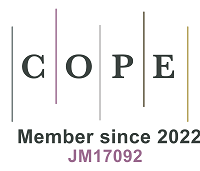Volume 4, Issue 2 (2025) – 6 articles
Cover Picture: Chemical composition plays a crucial role in the adverse health effects of fine particulate matter (PM2.5), yet traditional methods fail to comprehensively identify the toxic components. In this study, we developed a non-targeted approach using gas chromatography and high-resolution mass spectrometry, and obtained a database of 2,138 organic components from PM2.5 samples collected in urban Beijing between 2016 and 2018. Meanwhile, we exposed PM2.5 extracts to a human lung epithelial cell line and measured intracellular reactive oxygen species (ROS) and extracellular cytokines as indicators of cellular response. A combination of single pollutant model, partial least squares regression, and Bayesian kernel machine regression was applied and filtered 165 robust components in the database. Beyond 110 classic polycyclic aromatic compounds (PACs), we also identified 14 aromatic anhydrides and 21 nitrated compounds as contributors to toxicity. Molecular features such as unsaturation and volatility were found to be the most significant factors influencing cellular effects. Source apportionment analysis demonstrated distinct seasonal patterns in toxicological impacts. During the heating season, biomass burning emerged as the predominant pollution source, with its two-fold intensity elevation correlating with a significant 2.0% increase in tumor necrosis factor (TNF)-α, accompanied by 6.0% and 7.6% decreases in vascular endothelial growth factor (VEGF) and interleukin (IL)-8, respectively. In contrast, non-heating season observations revealed vehicular emission as the principal contributor, inducing a pronounced 11.0% elevation in ROS levels. This study introduces an effect-oriented approach for screening toxic components in ambient PM2.5, offering valuable insights to support the formulation of public health protection strategies.
view this paper 








